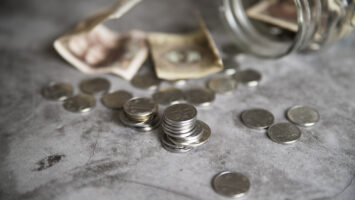Financial Safety Cushion: Why It Is Needed and How to Create It

During periods of economic and political transformations, general anxiety and fear of the future traditionally increase. In such conditions, people begin to spend less money and save more.
Many people now actively build a financial safety cushion. Here, we explain which instruments can be used to create it and how long it should last.
Financial Safety Cushion: What It Is and Its Purpose
A financial safety cushion is a financial reserve for an individual or a family, formed through regular deductions from income.
The financial cushion is needed to be prepared for a crisis, job loss, unplanned expenses, repairs, or large purchases. It provides confidence in the future and protects against unforeseen situations.
Why It Is Important to Have a Financial Reserve
First and foremost, a financial cushion allows you to feel comfortable and confident during periods of economic turbulence. For example, if an unplanned job loss occurs, having savings means you will not have to drastically cut your usual expenses or actively economize while searching for new employment.
Additionally, with a financial safety cushion, you can carry out apartment repairs without taking a loan or borrowing money from relatives or friends.
Creating a safety cushion will reduce the negative consequences of events related to job loss or worsening economic conditions, as well as in cases that require additional spending. At the same time, it is better to build a financial cushion in stable economic conditions and with a regular income.
It may seem that the efforts spent on building a safety cushion are unnecessary since one can simply take a loan. However, when economic conditions worsen, lending opportunities decrease, meaning the bank may refuse a loan or offer an unaffordable interest rate. In this situation, the efforts to create a financial safety cushion pay off many times over.
How a Safety Cushion Differs from Investing
A financial safety cushion is primarily intended to save money for emergencies. Only after the reserve is formed can one start investing.
Investments are monetary contributions intended to preserve and increase funds. In other words, investing is not only a way to save money but also to earn a profit. It is suitable for those willing to take risks.
How to Create a Financial Safety Cushion
Before forming a financial safety cushion, you need to analyze your expenses. The purpose of the reserve is to cover essential expenses during an emergency. Therefore, it is necessary to understand what money is definitely needed (payments for utilities, loans and credits, groceries, car maintenance, etc.) and what can be postponed or eliminated. To do this, you should:
- Make a list of all essential products, items, medications, and services.
- Estimate mandatory payments and cover one-time obligations. The remaining funds should be included in the safety cushion.
- After calculating expenses and reducing unnecessary costs, decide how much of your salary to allocate to the reserve. Ideally, at least 10%. This way, the cushion can gradually reach the required level.
- Start investing part of your income (for example, 10–15%) in various instruments, such as deposits or savings accounts. Investments should be significant but not excessively affect family expenses.
- When money is sufficient from salary to salary, review family expenses to free up 5–10% of funds, and allocate them to the financial safety cushion.
Experts believe that the size of a financial safety cushion should be from three to six months of mandatory expenses (apartment, food, medications, housing services, loan payments). These funds can be divided into several parts:
- 2/3 for deposits
- 1/3 for bonds
The best offers for you

- Amount up to up to 4 000 R
- Period up to 41 day
- Approval 97%

- Amount up to up to 8 000 R
- Period up to 90 days
- Approval 97%

- Amount up to up to 8 000 R
- Period up to 183 дня
- Approval 97%

- Amount up to up to 4 000 R
- Period up to 183 дня
- Approval 97%
